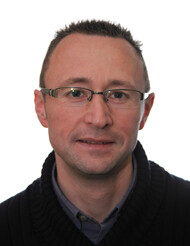Van der Auwera Gert
Senior Scientific Fellow

Gert Van der Auwera obtained his master in biochemistry from the University of Antwerp in 1992, for which he studied the evolution of cyanobacteria on the basis of ribosomal RNA genes. Continuing in this line of work, he obtained a PhD at the same university in 1997. During his PhD he focused on elaborating the phylogenetic relationships of some lower eukaryotes such as red and brown algae, fungi, and a variety of single-celled organisms.
For a first postdoc Gert decided to apply his acquired knowledge in the field of HIV, where he worked in the virology unit of Prof. Em. Guido van der Groen from 1997 till 2002, at the Institute of Tropical Medicine (ITM, Antwerp, Belgium). During this time he studied the genetic variability of HIV, and he worked on lab-based assays to discriminate the different HIV subtypes. He contributed to the development of several kits for the NIH. During this time he also worked for several months at the University of Tel-Aviv in Israel, in the lab of Prof. John Gershoni, where he acquainted himself with phage display.
In 2002, Gert seized the opportunity to work in a field that he got interested in already in high school: plant biotechnology. Up until 2006 he was employed at the Flemish Interuniversity Institute for Biotechnology (VIB) and the University of Ghent (Belgium), in the department of Plant Systems Biology headed by Prof. Dirk Inzé. He constructed transgenic Arabidopsis thaliana plants to allow scoring for point mutations in the plant’s genome. These transgenic plants were developed in the frame of evaluating site-directed mutagenesis driven by small interfering RNAs.
For his third post-doc he re-joined ITM, this time to support the group of Prof. Jean-Claude Dujardin, where he is still employed. His research involves the characterization of Leishmania and other trypanosomatid parasites at different taxonomic levels, and the standardization of typing assays in clinical settings. In addition, he applies these technologies in the context of epidemiological studies. To these ends he works closely with various partners in the global south, and has a longstanding collaboration with institutes in Peru, Nepal, and Ethiopia. In addition, Gert plays a leading role in a European consortium for harmonization of treatment and diagnosis of the leishmaniases, known as LeishMan (www.leishman.eu).